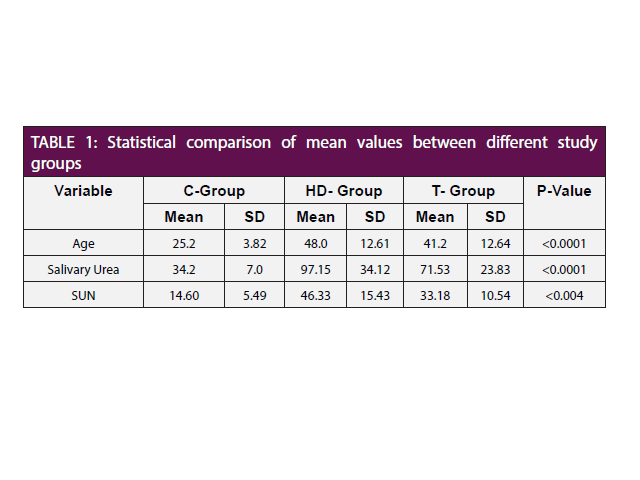Oral and Salivary Changes among Renal Patients Undergoing Hemodialysis and Renal Transplant: A Cross Sectional Study
DOI:
https://doi.org/10.5530/BEMS.1.1.6Keywords:
Hemodialysis, Renal failure, Salivary urea and nitrogen, Uremic odorAbstract
Background: Renal Failure involves an irreversible loss of renal function. This result in increased Blood Urea Nitrogen (BUN) levels which may lead to high concentration of salivary urea nitrogen (SUN) levels. The oral cavity may show a variety of changes as the body progresses through an azotemic to a uremic state. The dentist should be able to recognize these oral changes as a part of the patients’ systemic disease and not as an isolated occurrence. Aims & Objectives: To determine the Salivary Urea levels in patients undergoing hemodialysis & renal transplant and to evaluate the oral changes among them. Methodology: Subjects were selected from patients undergoing hemodialysis and patients who had underwent kidney transplantation from various hospitals in Guntur. The study comprised of 90 patients, of which Haemodialysis group (HD) with 60 patients, Transplant (T) group with 20 patients and 10 patients in control group. Saliva sample was collected from all the subjects to assess the SUN levels. The patients were examined for extra oral and intra oral changes. Results: There was a statistically significant difference in the Salivary Urea levels among HD, T and control group (p<0.05). The SUN levels were significantly higher in HD and T group compared to control group. There are significant percentages of extra oral manifestations & intra oral manifestations. Conclusion: Oral cavity reflects the systemic health status of an individual. Thus oral physicians must be aware of these signs and symptoms manifested in the oral cavity that can suggest the renal disease.










